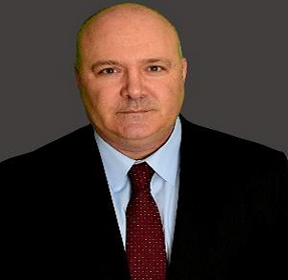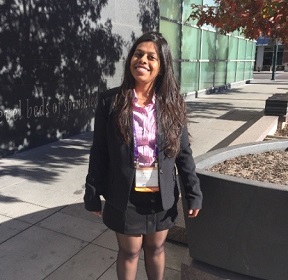Speakers
Joshua A Eldridge
Camargo Pharmaceutical Services USATitle: Challenges and opportunities in the development of abuse deterrent transdermal opioid therapies
Abstract:
Treatment of chronic pain with opioids is currently a therapeutic necessity, but it often causes problems with addiction and drug abuse. Moreover, opioid abuse presents a large burden to society on a global scale. In the United States, the Food and Drug Administration encourages development programs to bring abuse deterrent (AD) opioid medications to the market, and many of these programs have been executed via the 505(b)(2) regulatory pathway. Therefore, in recent years a number of products have successfuly achieved AD labeling status in the USA; however, none of those products have been transdermal drug delivery systems (TDDS). This discussion reviews current literature and offers perspectives on the challenges and opportunities in development of an AD TDDS. Technical and regulatory opportunities for the design of an AD TDDS are extensive, given that there is currently no FDA-approved TDDS product with an abuse deterrent claim. However, the challenges that attend the final design of a successful AD transdermal end product are also extensive. The patch product must maintain wearability, shelf life stability, and therapeutic drug delivery over the shelf life. Otherwise, the patch must be able to demonstrate the necessary AD characteristics that lead to a successful label claim for specified routes of abuse.
Shajila Siricilla,
Vanderbilt University Medical Center USATitle: Therapeutic control of preterm labor: drug discovery efforts to identify a natural-product with uterine-relaxant effect.
Abstract:
Currently, there are no FDA-approved tocolytic drugs for the management of preterm labor (PTL) due to adverse effects and lack of efficacy. Preterm birth rate continues to rise with over 15 million cases/year and remains the greatest contributor to neonatal morbidities and mortalities. Due to the lack of understanding of complex mechanisms that lead to preterm birth, we performed phenotypic screening of compound libraries to identify novel tocolytics. High-throughput screening of oxytocin-induced Ca 2+ -mobilization in uterine myometrial cells identified, natural-product, mundulone and mundulone acetate (MA) as hit-antagonists. We examined the uterine-selectivity of mundulone and MA by counterscreening vascular smooth muscle cells (VSMCs)—the major off- target limiting the use of current tocolytics, examined cytotoxic effects, identified synergistic combinations of mundulone (and MA) with current tocolytics to increase efficacy and/or potency to decrease off-target side effects and determined the ex vivo tocolytic efficacy and potency on human myometrial tissue and confirmed uterine selectivity at the tissue level by evaluating their effect on constriction of fetal ductus arteriosus (DA), a major off-target of known tocolytics. MA was found to display a greater selectivity towards myometrial cells when counter screened against aorta VSMCs. We found that mundulone displayed synergism with two current tocolytics (atosiban and nifedipine), while MA displayed synergistic efficacy with nifedipine. Mundulone was found to affect the viability of myometrial cells while MA demonstrated a selectivity index of >10. Both mundulone and MA showed concentration-dependent inhibition of uterine contractions, without affecting fetal DA vasoreactivity at the tissue level. Based on differences in uterine-selectivity and efficacy between mundulone and MA, this natural product could benefit from medicinal chemistry efforts to study structural activity relationship.
Prachi V Atre
USATitle: Quality risk management in pharmaceutical industry
Abstract:
Recently the application of Quality Risk Management (QRM) in the pharmaceutical industry has evolved and become a mandatory regulatory requirement. QRM is a continuous process of minimizing risks to product quality throughout its life cycle in order to optimize a product’s benefits and outweigh the risks. It is a systematic process for the assessment, control, and review of risks to the quality of the pharmaceutical product. ‘Risk’ is defined as the combination of the probability of occurrence of harm and the severity of that harm. ICH Q9 Guideline, Quality Risk Management illustrates core principles and tools of quality risk management to aid in efficacious and persistent risk-based decisions to both the industries viz. Regulatory and Pharmaceutical in regard to the quality of the drug substance as well as drug product from the patient’s perspective. A few examples of QRM systems that require practical decision-making are Validation, Documentation, Training, Inspection etc. Risk ranking and filtering is one of the widely used basic tools to identify and categorize the potential threat and risk is ranked using risk descriptors such as high, medium or low. Further, a risk score can also be used to define risk descriptors in risk ranking. Usually, an initial risk assessment analysis is conducted followed by final risk assessment analysis to either confirm the low risk or confirm the reduced risk. In conclusion, effective QRM system can facilitate better risk identification and subsequent risk control to improve scientific decisions.
Biography:
Prachi V. Atre has completed her Master’s in Industrial Pharmacy Practice from St.John’s University, Queens, NY, 11439. She has 3+ years of experience in injectables and is currently working as a Formulation Scientist II at Nexus Pharmaceuticals, Inc. She has published poster abstracts and presentations at Annual Meetings and Expositions such as American Asociation of Pharmaceutical Scientists (AAPS) and Controlled Release Society (CRS). She has good written and communication skills and has published review article on injectables recently.
Mallesh Kurakula
NIH project USATitle: Chemically modified electropsun chitosan membranes as implantable devices for controlled drug delivery
Abstract:
The study aims to investigate a new chemically (fatty acid) modified electrospun chitosan membranes (ESCM) for the local and controlled delivery of simvastatin, as an alternative to BMP-2 for stimulating bone formation. The modified membranes were characterized using scanning electron microscopy, attenuated total reflectance Fourier transform infrared spectroscopy, and examined the loading and release profiles of simvastatin from the modified ESCM. Further, the release and effect of simvastatin from ESCM on osteoblastic cells in in-vitro was assessed. Results showed that as the fatty acid chain length increased from two to six methylene groups, the hydrophobicity of the membranes increased. The long-chain ESCM released 40±1.5% for extended periods of up to 90 days of simvastatin in comparison to short-chain fatty acid modified. Cell studies showed that SMV from 100 to 400 ng/ml range possessed osteogenic potential in a dose-dependent manner. We anticipate performing and evaluating bone formation in rodent calvarial defects to assess the clinical efficacy of the developed ESCM.
Biography:
Mallesh Kurakula is currently a Research Scientist working on an NIH project at the Biomedical Engineering department at the University of Memphis, TN, USA, and also a Consultant for Triad Life Sciences®, TN, industry for innovative projects. His area of expertise includes advanced drug delivery, medical devices, and gene delivery. He is from a multidisciplinary background having a Ph.D. in Chemistry (2015), Masters in Pharmaceutics (2011), and Bachelor in Pharmacy (2009). Earlier he worked on “Fabrication and Evaluation of Polymeric Nanoscaffolds as Implantable Medical Device in Spinal Cord Injuries” as a postdoctoral researcher at the University of Bologna, Italy (2016-18) and on “Use of Lipid Nanoparticles for Effective Delivery of siRNA against Chikungunya Virus” as a research associate at CSIR-Indian Institute of chemical technology (IICT), India (2018-19). To date, he has published research (22), reviews papers (07), book chapters (06) in high-impact factor ISI indexed journals. He has even disseminated research in international arenas conducted across the United States, Europe & Middle East. Based on his international recognition in the area of expertise, he is serving as an Editorial board member, Review Editor, Guest Editor for book / special issues, and a peer reviewer in reputed journals, from different publishers such as Elsevier, Springer, MDPI, Frontiers, Bentham sciences. He has been a faculty judge panel member for research projects and abstract reviewer for OrDD session, Controlled release society (CRS) 2020, annual meeting at Vegas (July 2020).
Souvik Basak
Dr. B.C. Roy College of Pharmacy IndiaTitle:
Abstract:
Cancer is one of the world’s leading diseases, causing 9-10 million global deaths as per WHO (World Health organization) data in 2018. One of the major reasons of cancer is mutation in cellular guardian protein P53, whose mutation endows it with loss of function due to loss of its prime important tertiary structure. 50% of cancer cases are basically registered with P53 mutation either somatic or germline. To address this, one novel strategy has been investigated over the last few years is to restore P53 function by restoring its tertiary structure and interaction dynamics via interaction with novel organic ligands. In pursuance, we have a designed a novel nitrogen based heterocyclic ligand which can restore mutant P53 function, especially focussing on Y220C, an aberrant mutation found in breast cancer cells. Interestingly the ligand revealed interactions with the most hotspot zones of P53 that is residue 121-185, residue 242-250 and residue 275-282 insinuating its broad spectrum of action. The ligand was designed by de novo ligand design via fragment based joining and disjoining algorithm on the in situ ligand PK9324 (PDB ID:EYB, Protein PDB: 6GGD) using programme LEA3D. The genetic algorithm was used to create the ligands offsprings and PLANTS based docking with scoring function was used to select the best fitting ligand inside the binding site. Later, molecular dynamics simulation revealed stable seating of the ligand within the cavity together with hydrogen bonding interactions with the key amino acid residues spanning the cavity. The torsional flexibility of the ligand was supposed to be responsible for such nice seating and interaction which could restore the proximity of the S3/S4 and S7/S8 loop interactions enabling refolding potential of the protein. The cysteine residue at 220 position was seen rotated due to ligand interaction shortening the hydrophobic cavity in between which was seen after the mutation in the P53 protein. The dipole moment was restored to original indicating establishment of electrostatic interactions in between the loops which was lost after mutation. The toxicity score in silico has been encouraging by SWISS ADME and Boiled Egg diagram, a drug likeliness screening was also undertaken by Molinspiration and SWISS ADME. The recovery data was promising and altogether it suggests to be a promising anticancer ligand restoring vicious and non-functional mutant P53 into a functional wild type equivalent one.
Biography:
Souvik Basak, age 39 years, has completed his B.Pharm. and M.Pharm from Jadavpur University, Kolkata, India (2004 and 2006 respectively) and accomplished his PhD from Nanyang Technological University, Singapore at 2013. He has been working as Associate Professor, Division of Pharmaceutical Chemistry in Dr. B.C. Roy College of Pharmacy & Allied Health Sciences, Durgapur, WB, India since 2018. He has published more than 30 papers in various international journals of repute, several book chapters and more than 50 conference proceedings/presentations. He has published one Indian patent and associated as research consultant with various international research farms and Professors. He is currently also a member of fellow of Institute of Chemist, India
A PHP Error was encountered
Severity: Warning
Message: session_write_close(): Failed to write session data (user). Please verify that the current setting of session.save_path is correct (/tmp)
Filename: Unknown
Line Number: 0
Backtrace:





